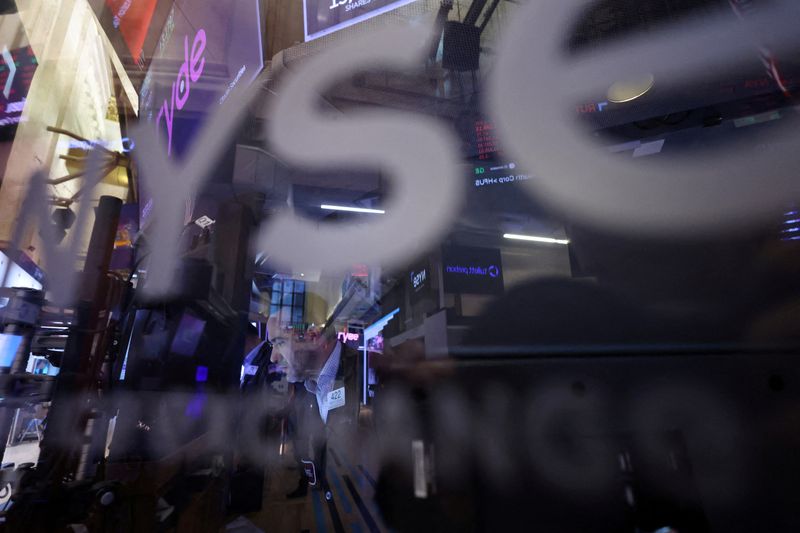Investing.com -- StandardAero NYSE:SARO recently attracted attention from major brokerages following its IPO in October.
Morgan Stanley initiated coverage with an “equal-weight” rating and a price target of $33. The analysts flag that StandardAero operates as a focused player in the maintenance, repair, and overhaul sector.
The company services a variety of aircraft engines and components across commercial, military, and business aviation markets.
Morgan Stanley’s report cites strong demand for engine maintenance, driven by rising air traffic levels and increased military spending, as favorable conditions for the company.
However, it notes that the stock’s recent rise of about 30% since its IPO has balanced the risk and reward at the current price level. Potential challenges identified include operational execution risks and lower-than-expected growth
Jefferies initiated coverage with a “buy” rating and a price target of $38. The analysts emphasize the importance of StandardAero’s investments in expanding its Component Repair Services (CRS) business, which has shown higher profit margins than its main engine services segment.
Jefferies estimates a 12% annual revenue growth through 2027, supported by maintenance programs for key engines such as the CFM56 and LEAP models.
Additionally, the brokerage projects a 16% compound annual growth rate (CAGR) in earnings before interest, taxes, depreciation, and amortization (EBITDA) by leveraging operational efficiency and in-sourcing component repairs.
Jefferies sees the company’s current strategy, including the potential for mergers and acquisitions, as providing further upside for long-term growth.
RBC Capital Markets has initiated an “outperform” rating and a $37 price target. StandardAero’s recent IPO raised $1.2 billion at $24 per share, positioning the company to benefit from its exclusive focus on engine aftermarket services.
RBC projects 12.7% annual revenue growth through 2026, driven by key engine programs like LEAP, CFM56, and CF34.
While overall margin expansion may be limited by material pass-through costs in the fleet segment, the CRS, with higher margins, is expected to support profitability and remain a focus for future acquisitions.
RBC’s valuation applies a 16x EV/EBITDA multiple to 2026 estimates, aligning with industry peers, and reflects confidence that StandardAero will benefit from stable aftermarket demand and favorable investor sentiment.
Bernstein also initiated an “outperform” rating and set a price target of $39. Bernstein projects a 10% annual revenue growth and a 13% adjusted EBITDA growth through 2028, with key contributions from high-demand engine platforms like the CFM56, LEAP, and CF34.
While the CRS segment accounts for 11% of revenue, it delivers higher margins than the primary Engine Services segment and is expected to play a viyal role in future profitability.
StandardAero’s growth outlook is supported by its history of successful acquisitions, though risks include potential airline overcapacity and OEM parts shortages, which could constrain MRO operations.
Bernstein’s valuation applies a 13.6x EV/EBITDA multiple, placing StandardAero’s growth potential at the high end among its peers while maintaining a conservative price target relative to industry leaders.
Last but not the least, UBS initiates a “neutral” rating and setting a 12-month price target of $34. UBS’s mentions several positive elements in StandardAero’s business, including its focus on the engine Maintenance, Repair, and Overhaul (MRO) sector and favorable industry conditions driven by aging aircraft fleets and delayed new deliveries from manufacturers.
Key growth drivers identified by UBS include the LEAP and CFM56 engines, which are expected to generate a combined $700 million in additional revenue by 2028, with further contributions potentially reaching $1.6 billion by 2030.
UBS forecasts an 11% annual revenue growth through 2028, though they highlight that growth in StandardAero’s other commercial segments—such as regional jets—may face challenges given slower fleet and flight hour increases in those areas.
The UBS analysis also projects 300 basis points of EBITDA margin expansion by 2028, largely driven by its CRS segment.
Additionally, free cash flow margins are expected to increase from 0% to 7% as StandardAero reduces debt and benefits from earlier capacity expansions.
However, UBS notes that these margins remain below those of industry peers, reflecting structural challenges.
StandardAero’s valuation, set at 16.9x EV/EBITDA, aligns with other aftermarket peers, balancing characteristics of both premium aftermarket providers and MRO companies trading at a discount.
